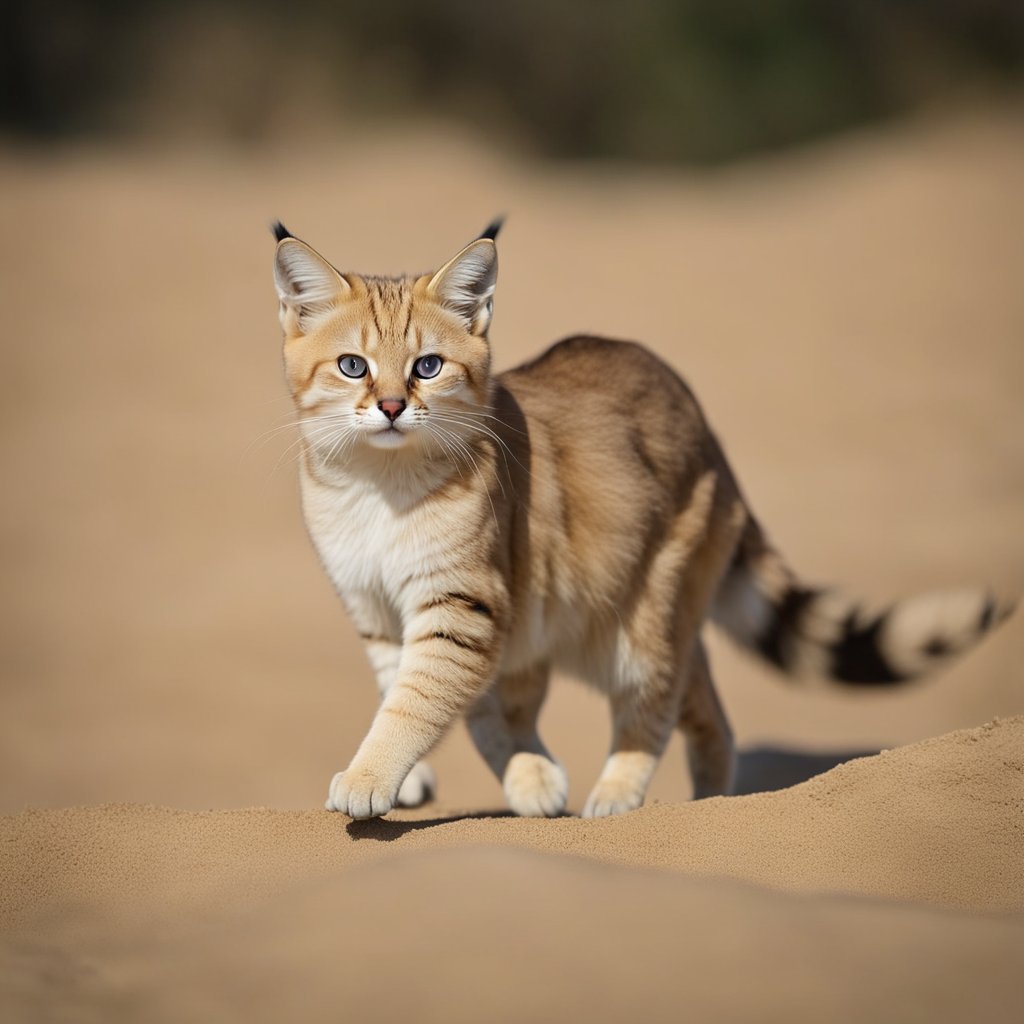Sand Cat Food: The Ultimate Guide to Their Wild Diet
The sand cat, a cryptic and captivating feline, thrives in the harsh environments of deserts across North Africa, the Middle East, and Central Asia. These resilient creatures have adapted to survive in extreme heat and arid conditions, and a crucial aspect of their survival lies in their highly specialized diet. Understanding the sand cat’s natural food sources is essential for conservation efforts and the proper care of any sand cats in captivity. This comprehensive guide delves into the intricacies of the sand cat’s wild diet, providing insights for researchers, conservationists, and anyone fascinated by these elusive desert dwellers.
The Sand Cat’s Predatory Prowess: Hunting in the Dunes
Sand cats are nocturnal hunters, expertly navigating the vast, sandy landscapes under the cover of darkness. Their hunting style is a testament to their adaptability:
- Exceptional Hearing: Possessing incredibly sensitive hearing, sand cats can detect the faintest sounds of prey moving beneath the sand.
- Agile and Stealthy: They are masters of ambush, using their low-slung bodies and padded paws to move silently across the dunes.
- Diverse Prey Selection: Sand cats are opportunistic hunters, with their diet varying depending on the availability of prey in their specific habitat.
Primary Food Sources: What’s on the Sand Cat’s Menu?
The sand cat’s diet is primarily composed of small mammals, birds, reptiles, and insects. The exact proportions of each food group depend on the geographical location and seasonal fluctuations in prey populations.
- Small Mammals: This often forms the cornerstone of their diet. Common prey includes:
- Gerbils
- Jerboas
- Volves
- Field Mice
- Birds: Opportunistic hunters, sand cats will readily consume birds, including:
- Larks
- Sandgrouse
- Other ground-nesting birds
- Reptiles: Lizards and snakes are a valuable source of hydration and nutrients in the arid environment.
- Various lizard species
- Small snakes
- Insects: Especially during times of scarcity, insects can supplement their diet.
- Grasshoppers
- Beetles
Hydration Strategies: Obtaining Water in the Desert
Water is a precious resource in the desert. Sand cats have developed several strategies to meet their hydration needs:
- Prey as a Source: They primarily obtain water from the fluids present within their prey.
- Limited Water Consumption: They can survive for extended periods without direct access to standing water.
- Nocturnal Activity: Hunting under the cover of darkness helps minimize water loss through evaporation.
The Importance of Diet for Conservation
Understanding the sand cat’s natural diet is paramount for conservation efforts. This knowledge informs:
- Habitat Management: Protecting and preserving the natural habitats of sand cats and their prey is crucial.
- Captive Care: Providing appropriate, species-specific diets in captivity is vital for the health and well-being of sand cats in zoos and conservation programs.
- Population Monitoring: Studying the diet of sand cats in the wild can provide insights into their health, abundance, and the overall health of their ecosystem.
The Impact of Human Activities
Human activities pose a threat to the sand cat and its food sources.
- Habitat Destruction: Development, agriculture, and infrastructure projects can lead to habitat loss and fragmentation, reducing the availability of prey.
- Hunting and Trapping: Although generally not a target of hunting, sand cats can be unintentionally caught in traps set for other species.
- Climate Change: Shifting weather patterns can impact prey populations and water availability, further challenging sand cat survival.
The Future: Protecting the Sand Cat’s Legacy
The sand cat faces numerous challenges, but dedicated conservation efforts are working to secure its future. By understanding the sand cat’s dietary needs and the threats it faces, we can work to protect these fascinating creatures and their fragile desert ecosystems. Continued research, habitat preservation, and community engagement are all critical elements in ensuring the survival of the sand cat.
Frequently Asked Questions (FAQs)
1. What do sand cats eat in captivity?
In captivity, sand cats are typically fed a diet that mimics their wild diet, including a mixture of raw meat (rabbit, chicken, or other lean meats), whole prey items (mice, chicks), and occasional supplements to ensure they receive all necessary nutrients.
2. How do sand cats find prey?
Sand cats possess exceptional hearing, allowing them to detect the faint sounds of prey moving underground or through vegetation. They also rely on their keen eyesight and a stealthy hunting style to ambush their targets.
3. Can sand cats survive without water?
Yes, sand cats are remarkably adapted to arid environments and can survive for extended periods without direct access to standing water. They obtain most of their hydration from the fluids within their prey.
4. Are sand cats endangered?
While not currently classified as endangered, sand cats are listed as Near Threatened by the IUCN due to habitat loss and other threats. Ongoing conservation efforts are crucial to prevent their decline.
5. How can I help sand cat conservation?
You can support sand cat conservation by donating to reputable conservation organizations, raising awareness about the threats they face, and advocating for responsible environmental practices in areas where sand cats live.




